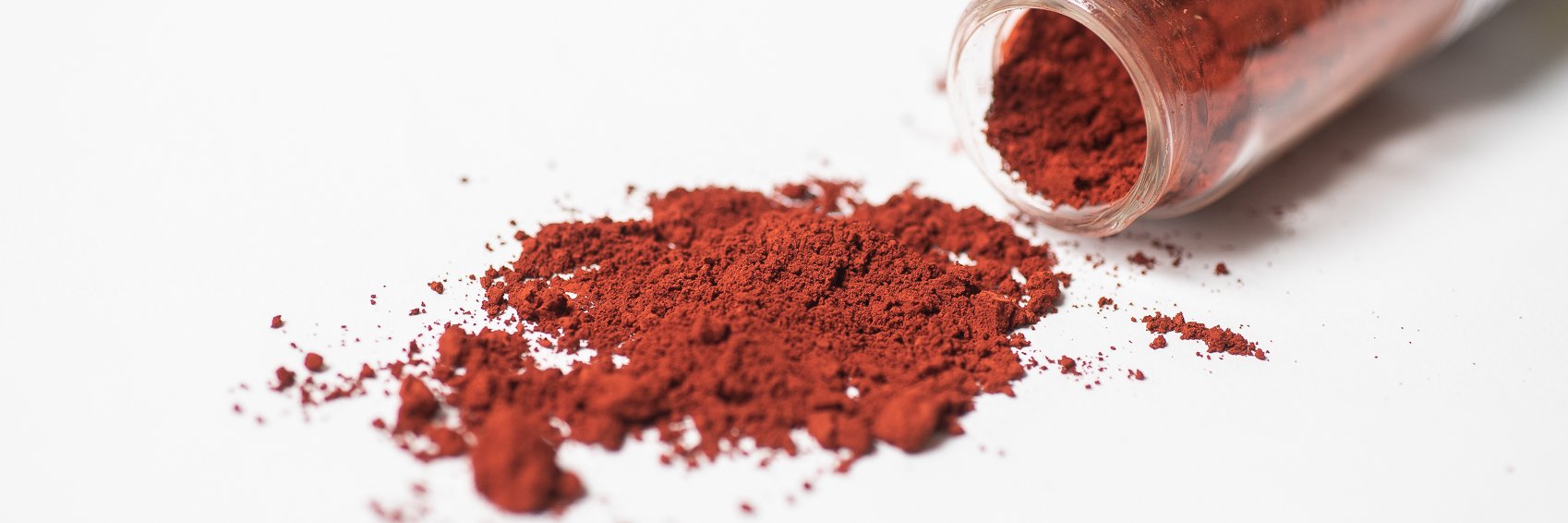| IBUpart® Fe2O3 | |
| Specific surface area | 40 ± 2 m2/g |
| Primary particle size | 35 – 40 nm |
| Agglomerate size | 5 – 10 µm |
| Purity | > 99 wt.% |
| Bulk Density | 200 – 300 kg/m3 |
| Crystallographic phase | Hematite |
| Possible applications |
|
| Datasheet | Download |
Coating Systems with Iron Oxide
Iron oxide nanoparticles can be used to improve the surface quality of certain products, for example to reduce material losses and tool wear when machining steel. Reduced scale formation also improves the surface quality of forged parts.
As lubricants, added iron(III) oxide nanoparticles lead to a greater decrease in the coefficient of friction compared to chemically identical non-nano materials.
Iron Oxide as a Pigment – Chemical Industry
Synthetic iron(III) oxide is mainly used as a pigment, produced with the Laux process. In this process, nitrobenzene is reacted with cast iron filings to produce the reaction products iron oxide and aniline. Subsequent chemical and thermal processing of the iron oxides produces synthetic iron(III) oxides. The yellow-orange to red-colored Fe2O3 pigments are used in paints and coatings, building materials, plastics and foodstuffs – for example under the name iron oxide red.
Medical Use of Iron Oxide
Iron(III) oxide nanoparticles with the cubic maghemite structure are used in medical technology for diagnostics and therapy due to their magnetic properties. As a contrast agent for magnetic resonance imaging (MRI), the nanoparticles help in the identification of tumors. In magnetic hyperthermia therapy, external magnetic fields heat the nanoparticles and the surrounding tissue. In this way, pathological cells can be destroyed in a targeted manner.
Iron Oxide as Battery Material
Another area of application is its use as a battery material in stationary energy storage: with renewable energies on the rise, the iron-air battery is gaining in attractiveness as a promising system for stationary applications. Iron oxide as the basic material for the cell mass is relatively readily available and, above all, cost-effective and environmentally friendly.
Background
As an oxide of iron, naturally occurring iron oxides are among the most mined minerals in the world (formula: Fe2O3). Mining volumes of several billion tons per year go to the iron and steel industry and secure the basis of the infrastructure of an industrial society. Iron oxides are also important for the chemical industry, of course in smaller tonnages. The most significant modifications of iron(III) oxide are cubic gamma Fe2O3 (maghemite) and trigonal alpha Fe2O3 (hematite).

